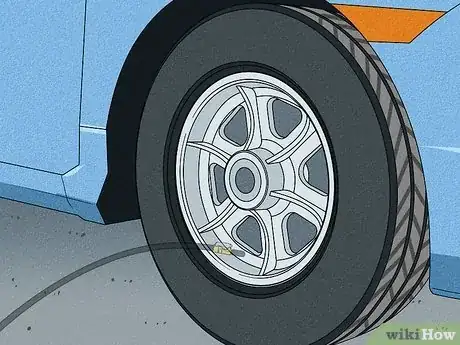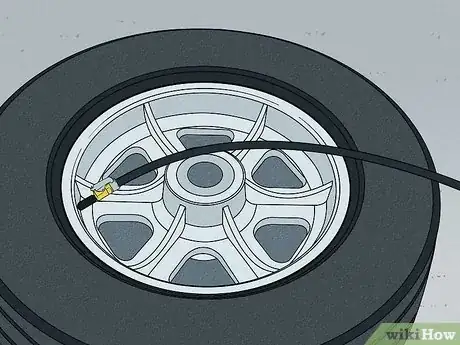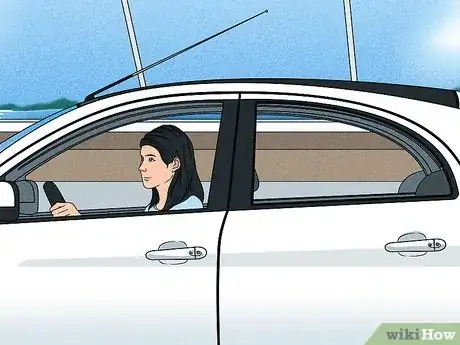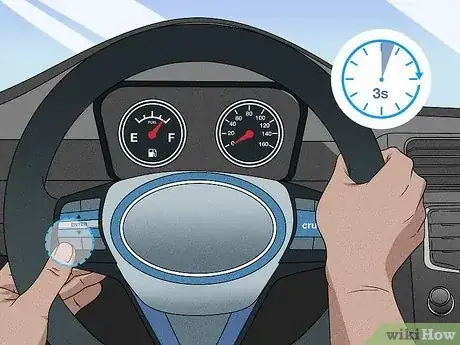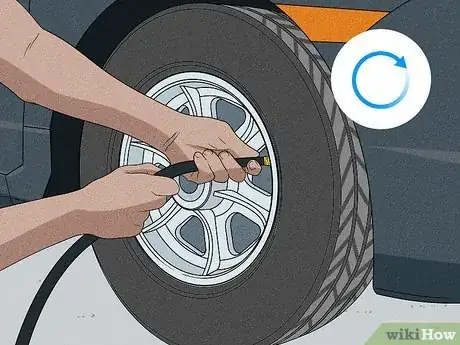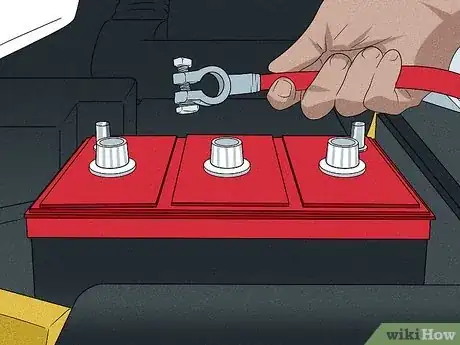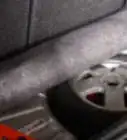This article was co-authored by Angel Ricardo and by wikiHow staff writer, Jessica Gibson. Angel Ricardo is the owner of Ricardo's Mobile Auto Detail headquartered in Venice, California. With over 10 years of experience in mobile detailing, Angel continues to attend auto detailing trainings to improve his customer service and auto detailing skills.
This article has been viewed 2,855 times.
There's something really frustrating about a tire pressure light that just won't turn off. If you've already filled your tires, but can't get the pressure light to clear, there might be an issue with the tire pressure monitoring system (TPMS). In this article, we'll walk you through several ways of resetting the tire pressure light that will do the trick!
Steps
Inflate each tire to the recommended PSI.
-
Check your owner's manual or the driver's door jamb for the correct PSI. If your tires aren't inflated to the recommended amount, it can trigger the sensor light, so read the manual to find out the proper PSI for the front and the back tires. You can also open your car door and look down at the label on the jamb—it shows the recommended PSI. Use a handheld tire gauge or check the pressure at a gas station air pump. Then, inflate your tires to match your car manufacturer's recommendation.[1] X Trustworthy Source Consumer Reports Nonprofit organization dedicated to consumer advocacy and product testing Go to source
- PSI stands for pounds per square inch—it's the unit of measurement for tire pressure.
- Ideally, check the tire pressure before driving your vehicle—when the tires heat up, they'll have higher air pressure.
Check the spare tire's PSI and fill it if necessary.
-
Inflate the spare tire, so it doesn't trip the TPMS sensor. It's really easy to forget that your spare tire also has an electronic sensor behind the valve stem—just like the tires on your vehicle. Get out your spare and fill it up according to your vehicle's recommended PSI.[2] X Trustworthy Source Consumer Reports Nonprofit organization dedicated to consumer advocacy and product testing Go to source This should fix the sensor.
- Keep in mind that the tire pressure for a spare is often much higher than the PSI for the tires on your vehicle. For instance, your car or truck may need its tires inflated to 33 PSI, but the spare should be inflated to 60 PSI.
Drive your vehicle after you inflate the tires.
-
Driving resets the TPMS system, usually after a few miles or minutes. Some owner's manuals might recommend that you drive at a certain speed like 20 mph, while others just say to drive your car for a few miles after you inflate the tires. Driving gives the sensors in the tires a chance to communicate with your car's TPMS system.[3] X Research source
Press the TPMS reset switch.
-
Push and hold down the button for 3 seconds to recalibrate the TPMS. Most cars have a TPMS set button right next to the steering wheel. Push the button and hold it down for 3 seconds. The low tire pressure light should turn off.[4] X Research source
- Consult your owner's manual to find your vehicle's TPMS set button.
- If your car has a newer dashboard screen, scroll through your car's information options and select "tire pressure monitoring system." This allows you to reset the system.
Adjust the tire inflation to activate the TPMS.
-
Over-inflate, deflate, and properly inflate the tires if TPMS isn't working. Sometimes, your vehicle's TPMS system won't recognize when the tires are properly inflated. To fix this, over-inflate each tire by 3 PSI more than the recommended amount. Then, deflate each tire. Finally, inflate them back to the recommended amount.[5] X Research source
- All these dramatic changes to the tire pressure should alert the TPMS system, so when the tires are properly inflated the light turns off.
Disconnect the battery cables and reconnect them.
-
Powering down the car's computer systems can reset the TPMS. Turn off your car's engine and pop the hood. Wear rubber gloves whenever you work with electricity, and disconnect the cables. Connect the cables with a jumper wire cable and wait about 5 minutes. Then, remove the jumper wire cable and reconnect the cables to your vehicle's battery—attach the positive cable first followed by the negative cable. Start the engine and the low tire pressure light shouldn't come on.[6] X Research source
- Be aware that this will reset other features in your car, too! It might reset your radio, clock, and other computerized components.
Ask a mechanic to check your TPMS.
-
Replace worn-out electronic sensors that could be tripping the sensor. If you've tried everything to reset the low tire pressure light but nothing works, it might be the actual electronic TPMS sensors. The electronic TPMS do wear out over time, but your mechanic can replace them.[7] X Research source
- Your mechanic will also remount and rebalance your tires as part of this process.
You Might Also Like
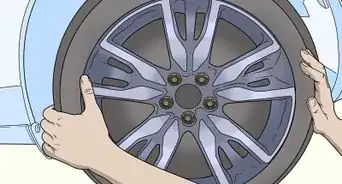
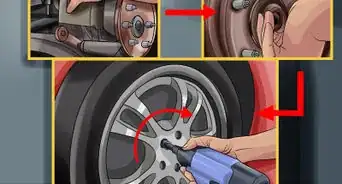





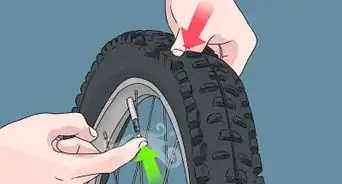
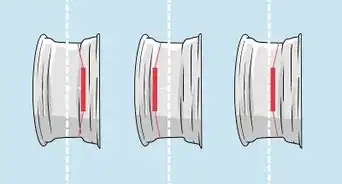

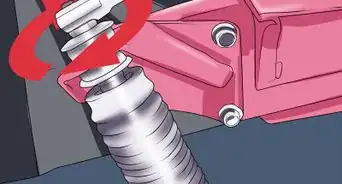
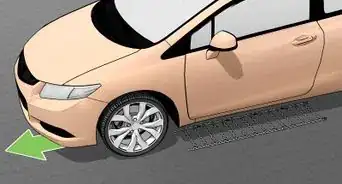
References
- ↑ https://www.consumerreports.org/cro/news/2010/07/your-vehicle-s-owner-s-manual-access-and-information/index.htm
- ↑ https://www.consumerreports.org/cro/news/2010/07/your-vehicle-s-owner-s-manual-access-and-information/index.htm
- ↑ https://youtu.be/-3E8vzlYLqE?t=238
- ↑ https://youtu.be/Y5rWf_QXaHw?t=60
- ↑ https://cararac.com/blog/tpms-reset-blinking-tire-pressure-light-problem-solving.html
- ↑ https://youtu.be/F6pMlbNW7-E?t=84
- ↑ https://youtu.be/nUNDvEzUjhI?t=73
About This Article

